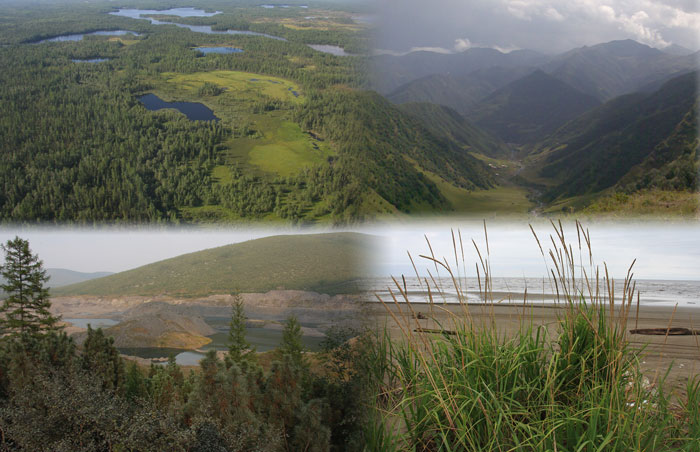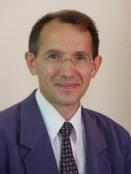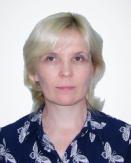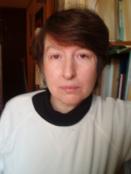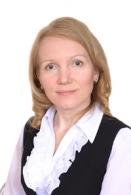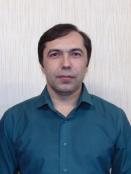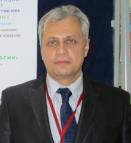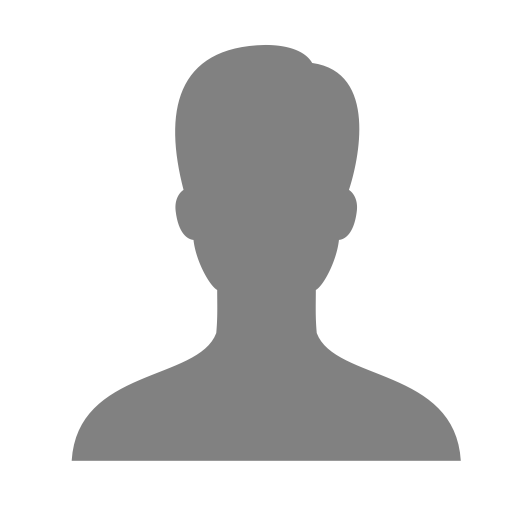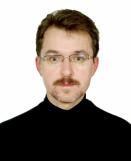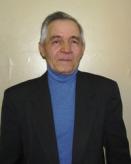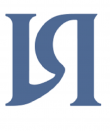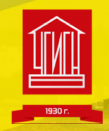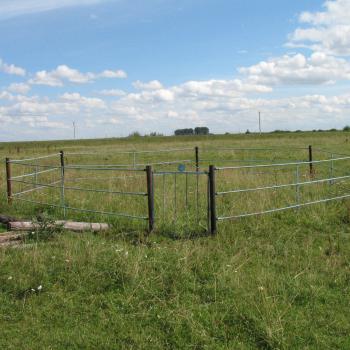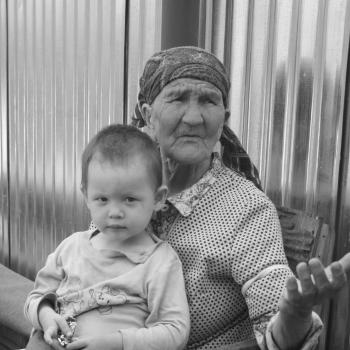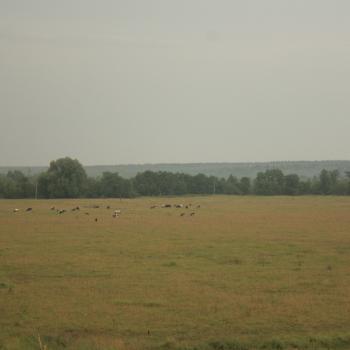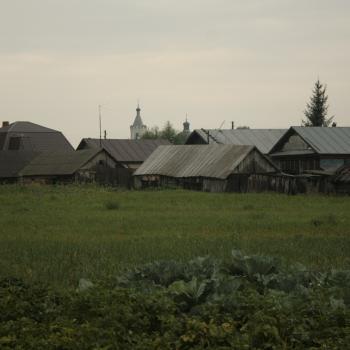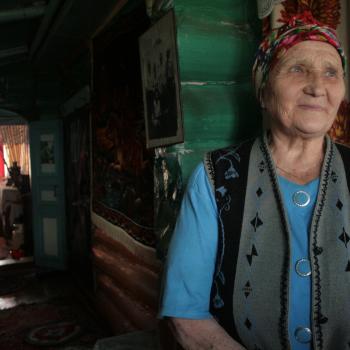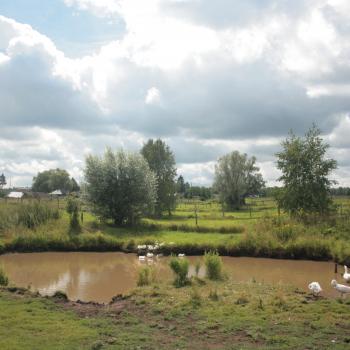Brief Information
The areal of traditional settlement of the Chuvash people in the Volga-Ural region is on the territories of the Chuvash Republic (except for the southwestern part), regions of the Republics of Tatarstan and Bashkortostan, Samara Oblast, Ulyanovsk Oblast, Orenburg Oblast, Saratov Oblast, and Penza Oblast. During the XX century the number of Chuvash migrants in Siberia increased (first of all, in Tyumen Oblast and Kemerovo Oblast, and in Krasnoyarsk Krai). Moscow and the Moscow region are the main centers of resettlement in recent decades. Besides the territories of Russia, Chuvash People live in other CIS countries too (first of all, in Ukraine: 10 thousand people live there, according to the 2001 census). Even with the preservation of ethnic identification, the Chuvash language is barely preserved outside the areas of compact Chuvash settlement in the Volga-Ural region.
According to the data of 2010 Census, 1,042,989 of the Russian Federation citizens identified themselves as Chuvash speakers. In 2002, 1,325,382 people identified themselves as Chuvash speakers; thereby, in eight years the number of Chuvash speakers diminished by 21,3 %. In view of this figure, and since the language shift has only accelerated over the past decade, the current number of native speakers of Chuvash is estimated to be no more than 700 thousand people.
The autoethnonym of the Chuvash people is чăваш, the autoethnonym of the Chuvash language is чӑваш чӗлхи. Four dialects of Chuvash are distinguished: Upper, Lower, Middle-Lower, and Northwestern (Malokarachkinsky) dialects.
The traditional economy of the Chuvash is based on agriculture combined with animal husbandry. The traditional religion is the folk religion of the Chuvash people. In the XVIII–XIX centuries, the vast majority of the Chuvash population was baptized, small groups of adherents of the folk religion (чăн чăваш ‘true Chuvash’) remained in the Republics of Tatarstan and Bashkortostan, in the Ulyanovsk Oblast, Samara Oblast, and Orenburg Oblast.
Genealogy
Chuvash belongs to the Bulgar branch, one of the two big branches of the Turkic languages. It does not have any close relatives, since all of the dialects of Bulgar type, which are not direct ancestors of Chuvash, became extinct in the Middle Ages.
Dialectal division of Chuvash was traditionally based on the distinction of the Upper dialect (Viryal) in the north-west of Chuvashia and the Lower dialect (Anatri) in the south-east. The Middle-Lower dialects (Anat Enchi) in the north-east are often distinguished as a separate group. In another interpretation, this territory is a kind of "transition zone" between the Upper dialect and the Lower one. A special dialect of Chuvash is represented in the Maloe Karachkino village of the Yadrinsky District of Chuvashia. All of the dialects of Chuvash are characterized by a high degree of mutual intelligibility.
Distribution
The Chuvash people are settled throughout the whole territory of Chuvashia excluding Alatyrsky and Poretsky District. Vast areas of traditional compact residence pattern can also be found in Tatarstan (Aksubayevsky, Drozhzhanovsky, Nurlatsky, Buinsky, Cheremshansky, Alkeyevsky, Tetyushsky and other districts), in Bashkortostan (Aurgazinsky, Bizhbulyaksky, Sterlitamaksky, Karmaskalinsky and other districts), in Samara Oblast (Koshkinsky, Pokhvistnevsky, Shentalinsky, Chelno-Vershinsky, Isaklinsky, Klyavlinsky and other districts), and in Ulyanovsk Oblast (Tsilninsky, Ulyanovsky, Melekessky, Cherdaklinsky and other districts).
The Chuvash population is also significant in the capitals and regional centers of the regions mentioned. Small enclaves of the Chuvash population traditionally exist in the Saratov Oblast (Volsky, Bazarno-Karabulaksky, Khvalynsky Districts) and Penza Oblast (Neverkinsky, Kuznetsky, Lopatinsky Districts) too.
Language contacts and multilingualism
Except for very rare exceptions in the oldest generation, all of the Chuvash speak Russian. Due to the fact that people of different ethnic groups live together in the same villages and various peoples inhabit the Volga-Ural region, the Chuvash often spoke the languages of their neighbours too (Tatar, first of all). Russian and Tatar people, in turn, were more or less proficient in the Chuvash language. In recent decades, due to the deterioration of the sociolinguistic situation, cases of representatives of neighboring peoples speaking Chuvash have become rare.
Language functioning
- Legal status
- Writing system
- Language standardization
- Domains of language usage
The official language of the Chuvash Republic.
Chuvash is a written language with an established spelling norm. The current alphabet originates from the variant of the Chuvash alphabet created in the 1870s by the enlightener I.Ya. Yakovlev. The Yakovlev alphabet replaced the scattered Chuvash writing systems that existed in the period from the XVIII to the third quarter of the XIX century (the so-called Old Chuvash period).
Language standardization is based on the Lower dialect. Speakers of various dialects may communicate with each other in standard language or using their own dialects (because Chuvash dialects are highly mutually intelligible).
Family / everyday communication
Family / everyday communication
Chuvash is used as a means of communication mainly in rural areas, and in the cities of Chuvashia it is used among the older generation.
Education
Education
Language of study
Preschool
There are no kindergartens with the Chuvash language as the language of study. Classes in Chuvash with small groups of preschoolers exist as an exception in the format of private initiatives ("Чăваш ачисен клубĕ", organized in Cheboksary by the association of parents and teachers «Аталану» (“Atalanu”)).
Primary education (1-4 grades)
Primary education in Chuvash is found in monoethnic villages.
Secondary and higher education
Chuvash is not used as the language of study. The use of Chuvash as a language of study may be possible during specialized profile classes at the departments of Chuvash philology.
Subject of study
Preschool
The possibility of learning Chuvash is declared in some kindergartens of Chuvashia. As a rule, such initiatives are realized in the form of ethno-cultural clubs and do not provide complete language acquisition.
Primary (1-4 grades) and basic education (5-9)
“Chuvash language” appears as a complementary one in schools of the Republic.
Secondary education (10-11)
Chuvash is not taught.
Higher education
Chuvash is studied in a number of higher educational institutions at the departments of Chuvash philology.
Language courses for both children and adults exist in the format of private initiatives.
Mass media
Mass media
Press
There are state print media in Chuvash (mainly district newspapers; the older generation of rural residents appears as their main readers).
Radio
The volume of radio broadcasting in Chuvash is highly limited. Radio programs in Chuvash are broadcast by two radio stations (Чăваш Ен Наци Радиовĕ (National Radio of Chuvashia), Тăван Ен). The content of radio programs is represented by news broadcasts, letters from listeners, and songs in Chuvash.
TV
The volume of TV broadcasting in Chuvash is highly limited. TV programs in Chuvash are broadcast by the TV company "Чăваш Ен". In addition, on the air of GTRK (State Television and Radio Broadcasting Company) "Chuvashia" news releases in Chuvash are present as well as the program "Ирхи тĕпел" (in which the poet Marina Karyagina has conversations with guests).
Culture
Culture
There are amateur ensembles and variety shows that perform in Chuvash. Movies and performances in Chuvash do exist, but their number is extremely limited. Cartoons for children in Chuvash are very rarely produced.
Science
Science
Presentations in Chuvash are possible at the conferences devoted to Chuvash studies; abstracts in Chuvash are published (in a limited number) in conference proceedings.
Folklore
Folklore
There are numerous publications of folklore in Chuvash (including ongoing editions).
Literature
Literature
Non-fiction in Chuvash is almost absent; the genre may only be presented in the form of separate short notes in the print media. Journalistic prose exists in the same format. Chuvash fiction has a rich tradition, but now it is practically interrupted, because there are extremely few young writers.
Religion
Religion
The use of Chuvash in the rituals of the Chuvash folk religion remains in the villages of unbaptized Chuvash people (in Tatarstan, Samara region, etc.). As for the Orthodox Church, there are services in Chuvash in rural areas of Chuvashia. In the cities church services are usually held in Russian.
Legislation
Legislation
Normative documents often contain the point about publication in Russian and Chuvash, but the Chuvash versions are not actually used.
Administrative activities
Administrative activities
There are signs with the names of streets, localities, and rivers in Chuvash, but their use is inconsistent.
Legal proceedings
Legal proceedings
There is no information about the availability of translations of the criminal and administrative сodes in Chuvash.
Industry
Industry
The use of Chuvash is possible in the branding of products.
Agriculture
Agriculture
In rural areas Chuvash is used in the communication between agricultural workers.
Trade and service
Trade and service
In rural areas, Chuvash is used orally in trade and in the service sector. In cities, the use of Chuvash in the design of stores is possible as a private initiative (for example, it is used in the sales halls of the “Pyaterochka” retail chain store).
Transport
Transport
In Chuvashia, Chuvash is used when announcing bus stops, and partly at train stations.
Internet
Internet
There are groups in social networks where Chuvash is used as a language of communication (along with Russian); there are websites and electronic media in Chuvash, but their number is limited.
Dynamics of language usage
Chuvash is relatively well preserved in the older generation, much worse amongst adults, and very poorly in the younger generation.
Until about the middle of the XX century, Chuvash was well preserved among the Chuvash people; this process was facilitated by the low degree of urbanization of the Chuvash territories. In the period between 1960s and 1980s, when the Chuvash population massively moved to the cities, the situation deteriorated significantly. During these years, the following ideological attitude prevailed: poor command of the Russian language, the Chuvash accent, and the other nuisances of language proficiency were declared to be the primary problems of the Chuvash-speaking population.
There was a negative attitude towards the Chuvash language as a “village” one in the society, and many parents preferred not to pass it to their children in order not to “spoil” their Russian. The status of Chuvash increased slightly in the 1990s, but steadily declined over the next twenty years. This process was facilitated by various factors: the growing sociolinguistic pressure from the side of Russian, non-compliance of the Republican language legislation, and the lack of proper administrative support.
According to the 2010 Census, 1,017,000 people stated Chuvash as their native language; 1,042,000 of Chuvash people stated that they speak Chuvash.
The language transmission to children in urban areas is almost non-existent. In rural areas language is transmitted, but by far not everywhere.
Many representatives of the Chuvash ethnic group maintain the widespread idea of “uselessness” of Chuvash, as well as the fear that teaching children Chuvash will affect the level of their proficiency in Russian. At the same time, the phenomenon of a positive attitude to the Chuvash language (which is not accompanied, however, by the desire to use it in everyday life) is relatively widespread. Chuvash appears only as a symbol of native places and relations with older relatives.
There are also segments of the Chuvash population that have a positive attitude towards the Chuvash language and strive to use it in everyday communication, but often they are faced with the inability to use Chuvash or with serious restrictive factors (for example, their own limited knowledge combined with the lack of an effective system of teaching Chuvash from scratch, the lack of multimedia aids that are attractive for children to learn, etc.).
The number of the ethnic group in different periods
Language structure
Phonetics
The Chuvash language has 8 vowels and 17 consonants.
Phonetics
The system of Chuvash vowel phonemes can be represented in terms of IPA as following:
In the table given the set of vowel phonemes is given in accordance with the orthoepic manuals. In addition, some "dialectal" vowels are widely used in the speech of almost all native speakers of Chuvash. This is, first, a special tense vowel ụ, which is the opposition to the simple u (or o in the Upper dialect). Secondly, these are the reduced rounded vowels ə̊, ъ̊.
At the phonetic level, e is an open-mid vowel. Reduced vowels are realized as close-mid vowels in many positions (usually in the first syllable and in non-first closed syllables); in non-first open syllables, the realization as open-mid vowels is frequent.
In Chuvash the principle of vowel harmony is present (back vowels are opposed to the front ones).
The system of Chuvash consonant phonemes represented can be represented in IPA as follows:
All non-palatal consonants are realized as palatalized in the environment of front vowels and non-palatalized in the environment of back vowels. In the subsystem of obstruent consonants, there is no phonological opposition on the basis of voice/voicelessness. Obstruent consonants appear in semi-voiced versions in the intervocalic position (between vowels or after a sonorant before a vowel); in other positions they appear as voiceless. In addition, in Chuvash voiceless geminated consonants are very frequent.
The stress pattern in literary Chuvash is based on the opposition of reduced vowels (ĕ, ă) and vowels of full formation (all others). The general rule consists in the following: stress falls on the last vowel of full formation in the word. Words that contain only reduced vowels have stress on the first syllable.
Morphology
Morphological type of the language: agglutinative (suffixes).
Morphology
Chuvash is an agglutinative language of suffixal type. Chuvash nouns attach affixes of number and case, as well as possessive affixes. Adjectives have a comparative and superlative degree, and a special intensive form can also be derived from many adjectives (by partial reduplication of the baseform). Numerals use a decimal system. Verbs attach markers of mood (in the indicative mood time is also encoded), person, and number, and also have a negative and potential form.
Syntax
The basic word order is SOV. The strategy for verbal agents' coding is nominative-accusative.
Syntax
The basic word order is SOV, other orders are possible under the influence of pragmatic or stylistic factors. The dependent elements in the noun and verb phrases precede the main word. The strategy for verbal agents’ coding is accusative.
Vocabulary
The largest sources of borrowings are Russian and Tatar.
Vocabulary
Approximately two thirds of the Chuvash lexemes used in everyday communication are of primordial origin and date back to the pre-Turkic state. The largest sources of borrowings are Russian and Tatar. The vocabulary of Arabic and Persian origin came into Chuvash mainly via Tatar. The Middle Mongol vocabulary was borrowed partially via Tatar and partially borrowed directly into Chuvash. Lexical borrowings from the neighboring Finno-Ugric languages are not numerous (several dozen borrowings from Mari, no more than a dozen from Permic, and only a few borrowings from Mordvin). The more ancient layer of loanwords includes borrowings dating back to the period of residence of the Bulgars, the ancestors of the Chuvash, in the Pre-Caucasus. These are, first of all, borrowings from the Ossetic language and some neighboring languages (apparently, via Ossetic).
Until recently, traditional Chuvash names were preserved in the villages of unbaptized Chuvash people. In addition, there is a phenomenon of using traditional names to name children of the Chuvash intelligentsia.
Исследование языка
The beginning of Chuvash lexicography was laid in the first half of the XVIII century, the first grammar was published in 1769. The fundamental works in almost all areas of the Chuvash language study were prepared in the period from the late XIXth to the early XXth century by N. I. Ashmarin. Later, the history of the Chuvash language was studied by G. Ramstedt, M. Ryasyanen, N. Poppe, V. G. Egorov, M. R. Fedotov, L. S. Levitskaya, A. Rona-Tash, A. V. Dybo, O. A. Mudrak. Chuvash dialectology was developed in the works of T. M. Matveev, A. S. Kanyukova, L. P. Sergeev. N. A. Andreev, I. P. Pavlov, and I. A. Andreev dealt with the questions of grammar.
Language experts
Hèctor Alòs i Font
(Barcelona, Spain)Expert in the sociolinguistic situation of modern Chuvash.
Gennadiy A. Degtyarev
(Cheboksary, Chuvash State Institute of Humanities)Expert in lexicology and lexicography of modern Chuvash, also deals with the problems of terminology and language norm.
Alevtina P. Dolgova
(Cheboksary, Chuvash State Institute of Humanities)Expert in grammar, dialectology, lexicography, and sociolinguistics of modern Chuvash.
Anna V. Dybo
(Moscow, Institute of Linguistics of the Russian Academy of Sciences)Expert in the Chuvash language position in context of Turkic and Altaic studies, history of the Bulgar branch of the Turkic languages, conducts field studies of Chuvash dialects.
Alena M. Ivanova
(Cheboksary, Chuvash State Institute of Humanities)Expert in Chuvash morphosyntax, phonetics, graphics, and the history of Chuvash written culture.
Aleksandr V. Kuznetsov
(Cheboksary, Chuvash State Institute of Humanities)Expert in the peculiarities of Chuvash traditional etiquette, dialectology, lexicography, lexicology, and sociolinguistics.
Eduard E. Lebedev
(Cheboksary, Chuvash State Institute of Humanities)Expert in Chuvash verb morphology, conducts comparative studies of Chuvash and other Turkic languages.
Oleg A. Mudrak
(Moscow, Institute of Linguistics of the Russian Academy of Sciences)Expert in historical phonetics and morphology of Chuvash, instantiations of the Old Chuvash writing system, the position of Chuvash in the context of Turkic and Altaic studies, the history of the Bulgar branch of the Turkic languages, conducts field studies of Chuvash dialects.
Aleksandr V. Savelyev
(Moscow, Institute of Linguistics of the Russian Academy of Sciences)Expert in the contacts of the Chuvash language, Chuvash in the Volga-Kama language union, instantiations of the Old Chuvash writing system, the position of Chuvash in the context of Turkic and Altaic studies, the history of the Bulgar branch of the Turkic languages, conducts field studies of Chuvash dialects.
Eduard V. Fomin
Expert in the history of Chuvash, stylistics, and lexicography.
Petr Ya. Yakovlev
(Cheboksary, Chuvash State Institute of Humanities)Expert in Chuvash philology, phonetics and phonology, accentology, translation studies.
Research centres
Institute of Linguistics of the Russian Academy of Sciences (Moscow)
History of Chuvash in the Turkic and Altaic context, dialectology, field research (Department of Ural-Altaic languages).
Chuvash State Institute of Humanities (Cheboksary)
Issues of grammar, sociolinguistics, and dialectology of modern Chuvash, as well as field research (section of linguistics, section of dictionaries).
I. Yakovlev Chuvash State Pedagogical University (Cheboksary)
Methodology of Chuvash language teaching (Department of Russian and Chuvash Languages at the Faculty of Chuvash and Russian Philology).
Chuvash State University (Cheboksary)
Issues of grammar, theory of translation, methodology of Chuvash language teaching (Department of Chuvash Philology and Culture, Faculty of Russian and Chuvash Philology and Journalism).
Core references
Grammatical descriptions: grammars, sketches
Andreev I. A. Chuvashskiy yazyk [Chuvash language] // Yazyki mira: Tyurkskie yazyki.
Moscow, 1996. P. 480–491.
Ashmarin N. I. Materialy dlya issledovaniya chuvashskogo yazyka [Materials for the study of Chuvash]. Kazan. Typo-lithography of the Imperial University, 1898. XXXIV + 392 + XIX pp.
Pavlov I. P. Sovremennyy chuvashskiy yazyk. Vol. 1. Morfemika. Morfonologiya. Slovoobrazovanie. Vol. 2. Morfologiya [Modern Chuvash. Vol. 1. Morphemics. Morphonology. Word formation. Vol. 2: Morphology]. Cheboksary: Chuvash state Institute of Humanities, 2014, 2017.
Sergeev L. P., Andreeva E. A., Kotleev V. I. Чăваш чĕлхи. Cheboksary: Chuvashknigizdat, 2012.
Savelyev, A. (2020). Chuvash and the Bulgharic languages. In: Robbeets, M., and Savelyev, A. (eds), The Oxford Guide to the Transeurasian languages. Oxford, UK: Oxford University Press. Pp. 446–464.
Dictionaries
Ashmarin N. I. Slovar' chuvashskogo yazyka [Dictionary of Chuvash]. V. I−XVII. Kazan, Cheboksary, 1928−1950.
Skvortsov M. I., Skvortsova A. V. Chuvashsko-russkiy i russko-chuvashskiy slovar' [Chuvash-Russian and Russian-Chuvash dictionary]. Cheboksary: Chuvashknigizdat, 2017.
Fedotov M. R. Etimologicheskiy slovar' chuvashskogo yazyka [Etymological dictionary of Chuvash]. Vol. I−II. Cheboksary: Chuvash state Institute of Humanities, 1996.
Selected papers on grammatical issues
Andreev I. A. Prichastie v chuvashskom yazyke [Participle in Chuvash]. Cheboksary: Chuvash publishing company, 1961.
Lebedev E. E. Aktsionsartovye znacheniya slozhnoverbal'nykh analiticheskikh form v chuvashskom yazyke. [Aktionsart semantics of comlex verb forms in Chuvash] Cheboksary: Chuvash state Institute of Humanities, 2016.
Работы по социолингвистике
Alòs i Font H. Issledovanie yazykovoy situatsii v Chuvashskoy Respublike [Research of the Language Situation in the Republic of Chuvashia]. Cheboksary: Chuvash state Institute of Humanities, 2015.
Alòs i Font, H. (2016). The Chuvash Language in the Chuvash Republic: An Example of the Rapid Decline of One of Russia’s Major Languages. In: Sloboda, M., Laihonen, P., Zabrodskaja, A. (Eds.), Sociolinguistic Transition in Former Eastern Bloc Countries: Two Decades after the Regime Change, Prague Papers on Language, Society and Interaction / Prager Arbeiten Zur Sprache, Gesellschaft Und Interaktion. Peter Lang, Frankfurt am Main, pp. 51–73.
Работы по этнологии
Etnografiya chuvashskogo naroda [Ethnography of the Chuvash people] / ed. V. P. Ivanov. Chuvash publishing company, 2017.
Yagafova E. A. Chuvashi Uralo-Povolzh'ya: istoriya i kul'tura etnoterritorial'nykh grupp (XVII — nachalo XX vv.) [Chuvash People of the Ural-Volga region: history and culture of ethnoterritorial groups (XVII — beginning of XX) ]. Cheboksary, 2007.
Resources
Corpora and text collections
The corpus is organized for achieving two goals: the first one is to create the corpus of the Chuvash language, the second one is to prepare Chuvash-Russian parallel texts.
Other electronic resources
The dictionaries are organized in the form of a database with a search option.
Data for this page kindly provided by
Alexander V. Savelyev, PhD in Linguistics, researcher at the Department of Ural-Altaic Languages of the Institute of Linguistics of the Russian Academy of Sciences.


